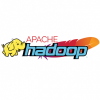Related Content
 |
Migrating a Database? Consider These Factors First Database migration is usually performed with a migration tool or service. Migrating one database to another actually involves migrating the schemas, tables, and data; the software itself is not migrated. Whatever the reason for migration, before you start, explore the options and take these considerations into account. |
|
 |
Before Data Analysis, You Need Data Preparation One of the prerequisites for any type of analytics in data science is data preparation. Raw data usually has several shortcomings in structure, format, and consistency, so first it has to be converted to a usable form. These are some types of data preparation you can conduct to make your data useful for analysis. |
|
 |
Exploring Big Data Options in the Apache Hadoop Ecosystem With the emergence of the World Wide Web came the need to manage large, web-scale quantities of data, or “big data.” The most notable tool to manage big data has been Apache Hadoop. Let’s explore some of the open source Apache projects in the Hadoop ecosystem, including what they're used for and how they interact. |
|
 |
When to Use Different Types of NoSQL Databases Web-scale data requirements are greater than at a single organization, and data is not always in a structured format. NoSQL databases are a good choice for a larger scale because they're flexible in format, structure, and schema. Let’s explore different kinds of NoSQL databases and when it’s appropriate to use each. |
|
 |
The Importance of Data Encryption in Cybersecurity Encryption protects private data with unique codes that scramble the data and make it impossible for intruders to read. Despite a data breach, encryption ensures that an institution’s private data is safe, even when attackers get past the firewall. Here are four reasons to use data encryption cybersecurity measures. |
|
 |
Designing Data Models for Self-Documented Tests When testing applications, documenting and interpreting test results can be a challenge. Data models enable us to collect and process test data more dynamically and uniformly. To design effective data models for self-documented tests, there are three important things to consider: what to document, collect, and report. |
|
 |
Building Culturally Inclusive AI Models For us to build the most effective technology, we need to learn from our past and build our future with more comprehensive data sets with cultural intelligence. This means AI that recognizes your story, chatbots that speak to you more authentically, and smart assistants that have inclusive data about your ancestry. |
|
 |
Selecting a Database for Your Data Needs Data requirements vary, and with so many different types of databases, selecting which to use can be a tricky choice. It all depends on what your database will be used for, the data structure, and the scale of data. Let’s look at six popular database types so you can decide which would be best for your situation. |




